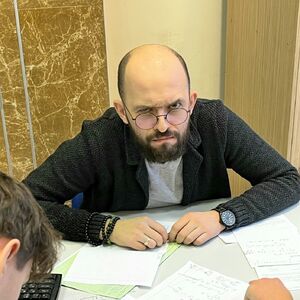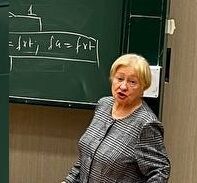Диссертация (1139990), страница 23
Текст из файла (страница 23)
Marenholz // J. AllergyClin. Immunol. – 2009. – Vol. 123. – P. 911–916.192. Mechanisms of photo(chemo)therapy / J. Krutmann, H. Honigsmann,C.A. Elmets [et al.] // Dermatological phototherapy and photodiagnostic methods /ed. J. Krutmann. – Heidelberg, Germany: Springer-Verlag, 2001. – P. 54–109.193. Mischke, D. Genes encoding structural proteins of epidermal cornificationand S100 calcium-binding proteins form a gene complex («epidermal differentiationcomplex») on human chromosome 1q21 / D. Mischke, B.P. Korge, I.
Marenholz [et al.]// J. Invest. Dermatol. – 1996. – Vol. 106 (5). – Р. 989–992.194. Morishita, Y. Possible influences of Staphylococcus aureus on atopic dermatitis – the colonizing features and the effects of staphylococcal enterotoxins /Y. Morishita [et al.] // Clinical and Experimental Allergy. – 1999.
– Vol. 29. –P. 1110–1117.195. Muschen, A. Differential IL-10 receptor gene expression in acute versuschronic atopic eczema. Modulation by immunosuppressive drugs and cytokines innormal cultured keratinocytes / A. Muschen, A. Mirmohammadsadegh, B. JarzebskaDeussen [et al.] // Inflamm. Res. – 1999. – Vol. 48. – P. 539–543.196. Narrow-band ultraviolet В and medium-dose ultraviolet Ai are equally effective in the treatment of moderate to severe atopic dermatitis / L.M. Majoie,M.J.
Oldhoff, Huib van Weelden [et al.] // J. Am. Acad. Dermatol. – 2009. – № 1. –P. 44–51.197. Noda, S. The translational revolution and use of biologics in patients withinflammatory skin diseases / S. Noda, J.G. Krueger, E. Guttman-Yassky // J. AllergyClin. Immunol. – 2015.
– Vol. 135 (2) . – P. 324–336.198. Novak, N. Immune mechanisms leading to atopic dermatitis / N. Novak ,134T. Bieber, D.Y. Leung // J. Allergy Clin. Immunol. – 2003. – Vol. 112. – Р. 128–139.199. Numerof, R.P. Cytokine and anti-cytokine therapies for psoriasis and atopic dermatitis / R.P. Numerof, K. Asadullah // BioDrugs. – 2006.
– Vol. 20, № 2. – P.93–103.200. Osawa, R. Filaggrin gene defects and the risk of developing allergic disorders / R. Osawa, M. Akiyama, H. Shimizu // Allergol. Int. – 2011. – Vol. 60. – Р. 1–9.201. PackageInsert.Protopic(Tacrolimus).AstellasPharmaEuropeB.V. Elisabethhof 19 2353 EW Leiderdorp. – Netherlands, 2009.202. Palmer, C.N. Common loss-of-function variants of the epidermal barrierprotein filaggrin are a major predisposing factor for atopic dermatitis / C.N. Palmer,A.D.
Irvine, A. Terron-Kwiatkowski [et al.] // Nat. Genet. – 2006. – Vol. 38 (4). –Р. 441–446.203. Palmer, C.N. Common loss of function variants of the epidermal barrierprotein filaggrin are a major predisposing factor for atopic dermatitis / C.N. Palmer [etal.] // Nat. Genet. – 2006. – Vol. 38. – Р. 441–446.204. Phototherapy for atopic eczema with narrow-band UVB / M. GrundmannKollmann, S. Behrens, M. Podda [et al.] // Am.
Acad. Dermatol. – 1999. – Vol. 40. –Р. 995–997.205. Presence of IgE antibodies of Staphylococcal exotoxins on the skin of patients with atopic dermatitis / D.Y. Leung [et al.] // J. Clin. Invest. – 1993. – Vol. 92. –P. 1374–1380.206. Presentation title: Methotrexate for Atopic Dermatitis in Children. Abstract, 2008, P608.207. Psoriasis / eds H.H. Roenigk, H.I. Maibach.
Sec. edition, revised and expanded. – N. Y.; Basel; Hong Kong: Marcel Dekker, Inc., 1991. – 961 p.208. S100 proteins in the epidermis / R.L. Eckert [et al.] // J. Invest. Dermatol. –2004. – Vol. 123. – P. 23–33.209. Sandilands, A. Filaggrin in the frontline: role in skin barrier function anddisease / A. Sandilands, C. Sutherland, A. Irvine [et al.] // J. Cell.
Sci. – 2009. –Vol. 122. – Р. 1285–1294.135210. Secreted virulence factor comparison between methicillin-resistant andmethicillin-sensitive Staphylococcus aureus, and its relevance to atopic dermatitis /P.M. Schlievert [et al.] // J.
Allergy Clin. Immunol. – 2010. – Vol. 125. – P. 39–49.211. Segre, J.A. Epidermal differentiation complex yields a secret : mutations inthe cornification protein filaggrin underlie ichthyosis vulgaris / J.A. Segre // J. Invest.Dermatol. – 2006. – Vol. 126. – P. 1202–1204.212. Serge, J.A. Epidermal barrier formation and recovery in the skin disorders /J.A. Serge // J. Clin. Investig.
– 2006. – Vol. 116, № 5. – P. 1150–1158.213. Shaffrali, F. Experience with low-dose methotrexate for the treatment ofeczema in the elderly / F. Shaffrali, G. Colver, A. Messenger [et al.] // Am. J. Acad.Dermatol. – 2003. – Vol. 48. – P. 417.214. Simpson, E.L. Atopic dermatitis / E.L. Simpson, J.M. Hanifin // J.
Am.Acad. Dermatol. – 2005. – Vol. 53, № 1. – P. 115–128.215. Slater, J.W. Second-generation antihistamines: a comparative review /J.W. Slater, A.D. Zechnich, D.G. Haxby // Drugs. – 1999. – Vol. 57, № I. – P. 31–47.216. Staniek V. Modulation of cutaneous SP receptors in atopic dermatitis afterUVA irradiation / V.
Staniek, C. Liebich, E. Vocks [et al.] // Acta Derm. Venereol. –1998. – Vol. 78 (2). – P. 92–94.217. Superantigen profile of Staphylococcus aureus isolates from patients withsteroid-resistant atopic dermatitis / P.M. Schlievert [et al.] // Clin. Infect. Dis. – 2008.
–Vol. 46. – P. 1562–1567.218. Svensson A. Xerosis and a history of dry skin. In: Diagnosis of atopic skindisease based on clinical criteria / A. Svensson; Ed. A. Svensson. – Sweden: Lund University Press, 1989. – P. 41–43.219. Takeda, K. Toll-like receptors in innate immunity / K. Takeda, S. Akira //Intern. Immunol. – 2005.
– Vol. 17. – P. 1–14.220. Thaci, D. Proactive disease management with 0.03% tacrolimus ointmentfor children with atopic dermatitis: results of a randomized, multicentre, comparativestudy / D. Thaci, S. Reitamo, M.A.G. Ensenat [et al.] // B.J.D. – 2008. – Vol. 159. –P. 1348–1356.136221. The innate immune response to bacterial flagellin is mediated Toll-like receptor 5 / F. Hayashi [et al.] // Nature.
– 2001. – Vol. 410. – Р. 1099–1103.222. The role of allergic risk and other factors that affect the occurrence ofatopic dermatitis in the first 6 months of life / Z. Munasir [et al.] // Asia Pac. Allergy. –2011. – Vol. 1 (2). – Р. 73–79.223. Toll-like receptors in health and disease: complex questions remain /R.F. Sabroe [et al.] // Immunol. – 2003. – Vol. 171. – P. 1630–1638.224. Validation of the U.K. diagnostic criteria for atopic dermatitis in a population setting / H.C. Williams [et al.] // Br. J. of Dermatol. – 1996.
– Vol. 135. – P. 12–17.225. Van Eerdewegh, P. Association of the ADAM33 gene with asthma andbronchial hyperresponsiveness / P. Van Eerdewegh, R.D. Little, J. Dupuis // Nature. –2002. – Vol. 418. – P. 426–430.226. Wang, X. Increased MAPK and NF-kB expressions of Langerhans cells isdependent on TLR2 and TLR4, and increased IRF-3 expression is partially dependenton TLR4 following UV exposure / X. Wang, Z.
Bi, Y. Wang // Mol. Med. Report. –2011. – Vol. 4 (3). – Р. 541–546.227. Werner, S. Regulation of wound healing by growth factors and cytokines /S. Werner, R. Grose // Physiol. Rev. – 2003. – Vol. 83. – P. 835–870.228. Werner, Y. The water – binding capacity of stratum corneum in noneczematous skin of atopic dermatitis / Y.
Werner, M. Lindberg // Acta Dermatol. Venerol. – 1982. – Vol. 62. – P. 334–337.229. Werner, Y. Transepidermal water loss in dry and clinically normal skin inpatients with atopic dermatitis / Y. Werner, M. Lindberg // Acta Dermatol. Venerol. –1985. – Vol. 65. – P. 102–105.230. Wirth, H.G.
Sebaceous gland in uninvolved skin of patients suffering fromatopic dermatitis / H.G. Wirth, N. Loor, D. Stoika // Arch. Dermatol. – 1981. –Vol. 270. – P. 167–169.231. Wollenberg, A. Consensus-based European guidelines for treatment ofatopic eczema (atopic dermatitis) in adults and children: part I / A. Wollenberg,137S. Barbarot, T. Bieber // J. Eur. Acad. Dermatol. Venereol. – 2018. – Vol.
32, № 5. –P. 657–682.232. Wozel, G. Severe atopic dermatitis and Lcfiunomide: First clinical experience and highlights of pertinent experimental data / G. Wozel, L. Vitez, С. Pfeiffer //Dermatology Online J. – 2006. – Vol. 12, № 3. – P. 6–15.233.
Wurthrich, B. Epidemiology and natural history of atopic dermatitis /B. Wurthrich // Allergy Clin. Immunol, int. – 1996. – Vol. 8. – P. 77–82.234. Wuthrich, B. Atopic dermatitis / B. Wurthrich // Ther. Umsch. – 1994. –Vol. 51, № 1. – P. 45–54.235. Ying, S. Lack of filaggrin expression in the human bronchial mucosa /Ying S., Q. Meng, C.J. Corrigan [et al.] // J.
Allergy Clin. Immunol. – 2006. –Vol. 118. – Р. 1386–1388.236. Yoshimura-Mishima, M. Suppressive effects of ultraviolet (UVB and PUVA) radiation on superantigen production by Staphylococcus aureus / M. YoshimuraMishima, H. Akamatsu, Sm. Namura [et al.] // J. Dermatol. Sci. – 1999. – Vol. 19 (1). –Р. 31–36.237.
Zuberbier, T. Patient perspectives on the management of atopic dermatitis /T. Zuberbier, S.J. Orlow, A.S. Paller [et al.] // J. Allergy Clin. Immunol. – 2006. –Vol. 118, № 1. – P. 226–232.138СПИСОК СОКРАЩЕНИЙ И УСЛОВНЫХ ОБОЗНАЧЕНИЙАтД – атопический дерматитБА – бронхиальная астмаИЛ – интерлейкинМТ – медикаментозная терапияСФТ – селективная фототерапияУФА-1-фототерапия – дальняя длинноволновая УФ-терапияУФБ – терапия узкополосная средневолновая УФ-терапияЦИК – циркулирующие иммунные комплексыЭЛ-1 – эндотелин-1FLG – филаггринIg – иммуноглобулинSCORAD (Severity Scoring of Atopic Dermatitis) – полуколичественная шкалаоценки степени тяжести кожного процесса при атопическом дерматите.
















